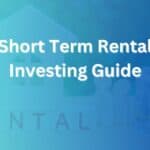Investing in real estate offers a proven way to build long-term wealth, generate passive income and achieve financial freedom. With average U.S. house prices rising nearly 5% annually and rental demand remaining strong, now is a compelling time to act.
Today, you’ll learn how to evaluate markets, choose strategies, finance deals, manage risk and scale your portfolio — in this article we’ll walk you through every step.
1. Understanding Real Estate Investing Fundamentals
Before you buy any property, you must grasp what real estate investing really means. It isn’t simply buying a house and hoping the price goes up. It’s about acquiring an asset that produces cash-flow, appreciates over time and offers tax and leverage advantages.
You’ll start by mastering key terms: cash-flow (rent minus expenses), appreciation (property value increase), depreciation (tax write-off), and leverage (borrowed money working for you). Understanding these fundamentals gives you a strong foundation to invest wisely.
Real estate isn’t a get-rich-quick scheme. It demands long-term thinking, careful research and execution. Recognize that you may hold the asset for years while compounding wealth through mortgages paid down, rent collected and property value growth.
2. Define Your Investment Strategy and Goals
Your objectives determine the strategy you choose. Are you looking for monthly income (cash-flow)? Or is your aim capital growth over 10-20 years? Maybe you want a mix. Choose the strategy that aligns with your life goals and risk tolerance.
Some common strategies:
- Buy-and-hold rentals: Acquire properties, rent them out, hold them long term.
- House flipping: Buy undervalued property, renovate and sell quickly for profit.
- Real Estate Investment Trusts (REITs) and crowdfunding: Passive investing in real estate without direct property ownership.
- Wholesaling: Find deals, assign contracts to another investor and collect a fee.
Each approach carries different levels of time, risk and capital. As a beginner, many experts recommend starting with rentals or REITs while learning the business.
3. Select the Right Market and Property
Location remains the single most important element in real estate success. You must analyze neighborhoods, job growth, infrastructure plans and supply-demand dynamics. Choose an area where rents are rising, vacancy is low and future development supports value growth.
When evaluating a individual property, use metrics like the 1% rule (monthly rent ≥ 1% of purchase price + renovation) and the capitalization rate (annual net operating income divided by purchase price). These help judge if the property can deliver cash-flow after expenses.
Always run the numbers: include property taxes, insurance, maintenance, vacancy allowance and property management. A successful investor buys only after the deal makes financial sense on paper.
4. Understand Financing and Leverage
Leverage powers real estate investing. By putting down a modest amount of cash and borrowing the rest, you can control a larger asset and amplify returns. For example, buying a $300,000 property with $60,000 down allows you to benefit from appreciation on the full value, not just your cash.
However, leverage increases risk. You still must cover mortgage payments even if the property is vacant or you incur unexpected repair costs. Thus you need a reserve fund and conservative assumptions. Consider these financing options:
- Conventional mortgage with 20%-30% down.
- FHA/VA loans (for certain buyers) with lower down payments.
- Private money or hard money loans (higher cost, short term) for flips or deals.
- Partnering or syndication where you bring some capital and someone else brings deal-flow or management.
Always ensure your debt service coverage ratio (net income divided by debt payments) is adequate (e.g., 1.2x or higher) before you proceed.
5. Manage the Property Effectively
Owning investment real estate means becoming a landlord (unless you hire a manager). Good property management ensures tenants pay on time, maintenance is handled promptly and your asset maintains value. Poor management can erode returns quickly.
Key aspects:
- Screen tenants thoroughly (credit, income, history).
- Set aside 4-10% of gross rent annually for maintenance and repairs.
- Monitor vacancy and turnover costs; plan average vacancy of 5-10% for many markets.
- Track all income and expenses clearly; expenses are fully tax-deductible.
- Revisit rent periodically and adjust based on market rates.
If you prefer hands-off investing, you can hire a professional property manager (typically 8-12% of rent) or invest via a REIT or crowdfunding platform where third parties handle operations.
6. Risk Management and Exit Strategy
Smart investors plan for risk and failure scenarios. Real estate carries risks: economic downturns, rising interest rates, property damage, tenant default, regulatory changes and illiquidity.
You reduce risk by:
- Choosing conservative financing and holding reserves.
- Diversifying across property types and locations.
- Maintaining good insurance and asset protection (LLC or trust).
- Having clear exit strategies: Will you hold indefinitely, sell after 5 years, do a 1031 exchange or refinance?
Always enter the deal with an exit in mind. If the market softens or your goals shift, you want flexibility. Holding until you’re forced to exit seldom leads to optimum results.
7. Scaling Your Portfolio Smarter
Once you’ve completed your first deal and learned the ropes, scaling becomes the next step. Scaling isn’t just buying more bricks; it requires systems, team, discipline and repeatable deal flow.
You’ll want to:
- Define a “buy-box”: i.e., the property type, price range, rent level, neighborhoods you target so you don’t spray and pray.
- Build relationships with agents, contractors, lenders and property managers.
- Reinvest profits and leverage equity from existing properties (via refinance) into new deals.
- Monitor performance: track cash-on-cash return (annual cash divided by cash invested), internal rate of return (IRR) and equity growth.
As you scale, your role shifts from being hands-on landlord to deal flow manager and strategist. Automate what you can. Hire trusted professionals. Keep your core goal—financial freedom and predictable income—front and center.
8. Tax Benefits and Legal Considerations
Real estate offers tax advantages that other investments often don’t. You can deduct mortgage interest, property taxes, depreciation (even if your property appreciates) and operating expenses to reduce taxable income. Consult with a tax advisor experienced in real estate.
Protect your assets legally by using LLCs or other entities if appropriate. Have clear contracts, leases and property management agreements. Regularly review local landlord-tenant laws and zoning changes that may affect your property.
9. Common Mistakes to Avoid
Here are frequent errors that beginner investors often make—and how you avoid them:
- Overestimating rent or underestimating expenses → Always use conservative numbers.
- Buying emotionally rather than logically → Focus on the deal math, not the “nice property”.
- Ignoring market research → Location still matters most.
- Underestimating time and management burden → If you can’t handle repairs, hire help upfront.
- Not cleaning up finances before investing → Lenders require 24-48 months of stable income histories.
- Expanding too fast without systems → Build roots first, then grow.
10. Realistic Expectations for 2025 and Beyond
While property markets have matured and interest rates are higher than a decade ago, real estate remains compelling for U.S. investors willing to be selective and disciplined. National appreciation might average 3-6% annually in many areas, but strong markets with job growth, housing shortages and demographic tailwinds can outperform.
Rental demand remains strong, especially from millennials and Gen Z renting longer than previous generations. That gives you an edge if you target the right assets in commuter zones, rental-friendly cities and near growth corridors.
If you execute the fundamentals—buy right, finance conservatively, manage efficiently and hold long term—you can build a portfolio that generates cash flow, grows in value and eventually provides you fields of options: retire early, pass income to family or fund other ventures.
Conclusion
You now have a comprehensive guide to real estate investing designed for U.S. investors. By mastering fundamentals, picking the right strategy, executing thorough market and property evaluation, using smart financing, managing risk and scaling systemically, you stand to build lasting wealth.
Remember: real estate works best for those who treat it as a business, not a hobby. Take action today, stay informed and keep your vision long-term.












